- News
- Reviews
- Bikes
- Accessories
- Accessories - misc
- Computer mounts
- Bags
- Bar ends
- Bike bags & cases
- Bottle cages
- Bottles
- Cameras
- Car racks
- Child seats
- Computers
- Glasses
- GPS units
- Helmets
- Lights - front
- Lights - rear
- Lights - sets
- Locks
- Mirrors
- Mudguards
- Racks
- Pumps & CO2 inflators
- Puncture kits
- Reflectives
- Smart watches
- Stands and racks
- Trailers
- Clothing
- Components
- Bar tape & grips
- Bottom brackets
- Brake & gear cables
- Brake & STI levers
- Brake pads & spares
- Brakes
- Cassettes & freewheels
- Chains
- Chainsets & chainrings
- Derailleurs - front
- Derailleurs - rear
- Forks
- Gear levers & shifters
- Groupsets
- Handlebars & extensions
- Headsets
- Hubs
- Inner tubes
- Pedals
- Quick releases & skewers
- Saddles
- Seatposts
- Stems
- Wheels
- Tyres
- Health, fitness and nutrition
- Tools and workshop
- Miscellaneous
- Cross country mountain bikes
- Tubeless valves
- Buyers Guides
- Features
- Forum
- Recommends
- Podcast
review
£950.00
VERDICT:
The Scultura offers a great ride, with a very comfortable yet stiff frameset that's also eminently upgradable
Great ride quality from the frame and fork
Balanced handling that works for beginners and seasoned riders alike
Limited tyre clearance
Brake pads need an upgrade
Weight:
9,260g
Contact:
At road.cc every product is thoroughly tested for as long as it takes to get a proper insight into how well it works. Our reviewers are experienced cyclists that we trust to be objective. While we strive to ensure that opinions expressed are backed up by facts, reviews are by their nature an informed opinion, not a definitive verdict. We don't intentionally try to break anything (except locks) but we do try to look for weak points in any design. The overall score is not just an average of the other scores: it reflects both a product's function and value – with value determined by how a product compares with items of similar spec, quality, and price.
What the road.cc scores meanGood scores are more common than bad, because fortunately good products are more common than bad.
- Exceptional
- Excellent
- Very Good
- Good
- Quite good
- Average
- Not so good
- Poor
- Bad
- Appalling
The Merida Scultura 300 may sit at the lower end of the company's line-up, but it goes to prove that you don't need to spend a fortune to own a very capable and comfortable performance road bike that'll give you a grin from ear to ear. At its heart is a very good aluminium alloy frame, plus a full carbon fork and a smattering of decent kit.
> Find your nearest dealer here
Ride
I first rode an aluminium Scultura back at the beginning of 2019, the 200 Disc, and was very impressed with the frame. While the 300 we've got here is the rim brake option, that same impressive ride quality is still very much there.
Those who've been around the sport since the turn of the century will remember the early, harsh aluminium bikes on the market with their massive, oversized tubes that resonated every tiny vibration back through to the rider.
Now, with the use of various alloy grades, butting (creating differing wall thicknesses across the length of a tube), hydroforming (creating tube profiles using liquid under pressure) and computer analysis software, manufacturers are delivering bikes like this Scultura, with a frame that is stiff where it needs to be, but with plenty of comfort included thanks to the manipulation of the tube profiles.
The Maxxis tyres aren't exactly the most supple either, so the fact that the Merida manages to shrug off any resonation from the road is further testament to how good the frame is.
It's not the lightest bike out there – offerings below a grand seldom are – but its 9.26kg (20.4lb) doesn't really hold the 300 back on anything but the steepest of climbs, and gives it a planted feel on the road. It never feels flighty when you hit a section of rough tarmac at speed, and on descents it brings an extra level of confidence, like the Scultura has got your back.
I tend to ride a lot on big main roads so I'm often competing at roundabouts and traffic lights with motor traffic, especially when travelling through large towns and cities. The Merida feels quite sprightly off the mark, not like my 6.8kg (14.9lb) B'Twin, but it doesn't feel like you are having to use loads of energy to get it rolling even when you are having to do it every 200 yards or so.
The geometry seems to work well – for me at least – allowing me to stay seated for long periods without having to move out of the saddle to relax my lower back. This meant that on the majority of climbs I could just stay seated and tap out the efforts.
When it gets really steep the weight becomes more noticeable but the frame is ripe for upgrades, and if you really wanted to you could shed plenty of grams by treating yourself to some lighter wheels and tyres.
Handling-wise, things are well balanced. The front end is quite aggressive in terms of the head angle, but the steering comes across as quite neutral without being boring.
At cruising speed it's a very easy bike to ride with what feels like minimal input. Crank things up a notch and the Merida will happily change direction from bend to bend with little fuss. The only time I would have liked something just a little bit quicker was on really technical sections. That would make the steering twitchier elsewhere, though, which I wouldn't be keen to see as the Scultura makes for a very good first serious road bike or a quality upgrade from bikes around the £500 mark.
Frame and fork
The Scultura range contains both carbon fibre and alloy models, the latter covering the 100, 200, 300 and 400 versions.
Known as Scultura Lite, it is constructed from triple-butted 6066 grade aluminium alloy, the only difference between the 100, 200 and the other two higher models is that they are designed for a threaded bottom bracket whereas the 300 and 400 are Press-Fit 86.
At the front end you are getting a tapered head tube, 1 1/8in at the top and 1 1/2in at the bottom. Beneath that is a full carbon fibre fork which is painted to match the frame. I was impressed with its stiffness under heavy braking and steering at speed.
One of the benefits of using the press-fit BB system is that with the bearings pressing inside the frame, the BB shell can be wider without affecting the distance between the pedals (Q-factor).
A wider shell allows you to use a wider down tube for stiffness. Merida has gone with a large 'D-shape', and has also flared the seat tube out at the bottom, although it hasn't really exploited the width to use wider chainstays – not that the Scultura seems to suffer for that when it comes to power transfer.
I'm a big fan of the colour – the grey with red accents gives a classy look, and although the welding isn't the prettiest I've seen at this price point, it does have a sort of functional look.
One thing that might not be to everyone's taste is the recommended maximum tyre size of just 25mm. Personally it doesn't bother me – on a bike like this 25mm is just fine for me – though I did find a set of 28mm tyres fitted fine, you just don't quite have as much room.
The rim brake callipers limit the use of anything bigger than 28mm.
The majority of the cable routing is internal. The rear brake cable runs through the top tube, and both mech cables exit just above the bottom bracket. It's not something I'm really a fan of as it means they are re-entering the outside world exactly where they are going to take the brunt of road spray and mud from the front tyre.
Here, though, Merida has countered this by enclosing both cables in a sleeve to protect them from the elements.
When it comes to mounting points, all you get are bolts for two bottle cages, but hey, it's a race bike – you don't need guards or a rack!
Not requiring expensive moulds like a carbon fibre frame, alloy frames are often available in a larger range of sizes and that is true here. The Merida comes in nine options from 4XS to XL, 49cm to 59cm when it comes to the top tube length.
Finishing kit
The Scultura 300 is based primarily around a Shimano Tiagra groupset, which sits above Claris and Sora, but below 105.
It's the only 10-speed groupset in the line-up and basically mimics the performance and ergonomics of the previous 105 5800, but with one sprocket less on the cassette.
What this means, in use, is that you get precise shifting across the cassette and chainrings alike, with a definitive click at the shifter as the chain moves left or right. If you want to get a more detailed description of everything on offer then check out Dave's review of the 105 5800 groupset.
Ratio-wise, Merida has gone for a 50/34-tooth chainset paired up with a 12-28 cassette. Not the lowest gearing out there, but it sits well with the performance the Scultura is designed to deliver.
Merida has fitted its own Road Comp dual-pivot calliper brakes. They offer decent levels of stiffness through the callipers themselves, but the pads let things down a bit. The compound used is very hard, so there isn't much bite on the rim surface. It did improve over the miles as the rims and pads bedded in, but I'd still recommend an upgrade to give more confidence should you need the brakes in an emergency, especially in the wet.
Merida also supplies the seatpost, saddle, stem and handlebar.
The Expert SL handlebar is quite shallow in its design, which means the drops are pretty accessible to most.
Like the handlebar, the Comp CC stem is made from aluminium and ties everything in nicely when it comes to aesthetics. Stem length is governed by frame size, starting at 70mm for the 4XS and 3XS, up to 110mm for the L and XL.
The Comp CC seatpost is also alloy. It's basic but simple to adjust and there were no issues with slippage.
Perched above it is the Comp SL saddle which I found comfortable. The padding isn't too thick or too soft (I know, I get all a bit Goldilocks when it comes to saddles), and I found it very supportive on both long and short rides.
Wheels and tyres
The Comp SL rims, also from Merida, are quite old school with their 17mm inner width. The majority of modern wheels are around 19mm to 21mm internally for road use; what it means here is that the 25mm tyres keep to their standard width when mounted.
The wheels add quite a bit of weight to the overall build, but are solid and durable, so are worth hanging on to even if you are only going to use them for winter use after treating yourself to a pair of lighter race/summer wheels... The Scultura's frame is very upgradable, so if you can stretch to a new set of lighter wheels they'll give a massive boost to performance.
Maxxis supplies the tyres and, as I mentioned above, they aren't the most supple and give quite a muted ride, as in they don't allow a huge amount of feedback through from the road.
Grip is okay in the wet and dry, and they didn't suffer from any damage or punctures throughout the test period. As with the wheels, though, if you can upgrade it will really aid the bike's speed and weight.
Value
Entry-level aluminium alloy rim-brake bikes are getting harder and harder to find, especially around this price of just under a grand, but there is some stiff competition.
The Van Rysel RR 900 AF, part of Decathlon's race bike range, offers a butted alloy frame and full carbon fork although you are getting a 105 groupset and a set of Mavic Aksiums for the £850 build price, so quite the bargain. Currently out of stock, though...
An alloy model that is a common choice in the sub-£1,000 category is the Specialized Allez, a bike that I have ridden in various builds, and even though it is not quite as race-inspired as the initial versions it is still a quick and comfortable bike.
> Buyer’s Guide: 13 of the best 2020 road bikes under £1,000
Specialized doesn't offer a Tiagra build but it does have Sora (Allez Sport) and 105 (Allez Elite) models, at £849 and £1,049 respectively. Pitched £100 either side of the Scultura, that suggests a Tiagra-equipped Allez would be around the same price.
Another popular choice is Giant's Contend SL. It's slightly more expensive than the Merida at £999, but you are getting the majority of a 105 groupset, albeit with a non-series chainset.
Conclusion
The Scultura 300 has a very good frameset that delivers a great balance of stiffness and comfort, which is what makes the Scultura so upgradable. If you are new to riding, this is definitely a bike that could grow with you as your aspirations, fitness and talent take off.
Verdict
The Scultura offers a great ride, with a very comfortable yet stiff frameset that's also eminently upgradable
road.cc test report
Make and model: Merida Scultura 300
Size tested: M/L
About the bike
List the components used to build up the bike.
Merida lists:
FRAME SCULTURA LITE
FRAME SIZE 4XS, 3XS, XXS, XS, S, S/M, M/L, L, XL
COLOR SILK ANTHRACITE (RACE RED)
FORK SCULTURA CF
BRAKE FRONT MERIDA ROAD Comp
BRAKE REAR MERIDA ROAD Comp
BRAKE LEVER Shimano Tiagra
HEADSET MERIDA M2339 Neck
HANDLEBAR MERIDA EXPERT SL
HANDLEBAR STEM MERIDA COMP CC
GRIP MERIDA ROAD EXPERT
DERAILLEUR (F) Shimano Tiagra
DERAILLEUR (R) Shimano Tiagra
SHIFTER FRONT Shimano Tiagra
SHIFTER REAR Shimano Tiagra
SEAT POST MERIDA COMP CC
SEAT CLAMP MERIDA Expert
SADDLE MERIDA COMP SL
CHAIN KMC X10
CHAINWHEEL Shimano Tiagra
CRANK SIZE 165 mm-4S/3S/XXS, 170 mm-XS/S, 172.5 mm-SM/ML, 175 mm-L/XL
FREEWHEEL Shimano CS-HG500
BOTTOM BRAKET Shimano Pressfit BBRS500-PB
RIM MERIDA COMP SL
TIRE FRONT Maxxis Dolomites
TIRE REAR Maxxis Dolomites
HUB FRONT Road seal bearing
HUB REAR Road seal bearing
AXLE FRONT QR
AXLE REAR QR
SPOKES Black stainless
Tell us what the bike is for and who it's aimed at. What do the manufacturers say about it? How does that compare to your own feelings about the bike?
The Scultura is the lightweight road bike in Merida's range, the high-end models being among the very lightest production bikes out there. Merida offers the Scultura in both rim brake and disc brake versions, and in carbon fibre and aluminium.
Where does this model sit in the range? Tell us briefly about the cheaper options and the more expensive options
Below the Scultura 300 sits the 200 (Shimano Sora) and the 100 (Claris). Above is the 400 which has a 105 groupset. All other models in the range, the 4000 and higher, switch to carbon fibre frames.
Frame and fork
Overall rating for frame and fork
8/10
Tell us about the build quality and finish of the frame and fork?
I have seen neater weld finishes but the overall quality of the frame and fork is very good, topped off with a hardwearing coat of paint.
Tell us about the materials used in the frame and fork?
SCULTURA LITE FRAME
Lightweight 6066 triple butted aluminium frame with tapered head tube for precise steering and Press-Fit 86 bottom bracket for effective power transfer. Featuring internal cable routing and aero profiled tubing.
FORK
All models feature a full carbon fork with a tapered steerer to give precise, confidence-inspiring handling. Aluminium and CF2 carbon models feature a 'regular' 1 1/8in to 1 1/2in taper.
Tell us about the geometry of the frame and fork?
The geometry sits somewhere between a race bike and a more relaxed endurance machine.
For this M/L model the numbers are:
Top tube - 560mm
Seat tube - 540mm
Head angle - 73 deg
Seat angle - 73.5 deg
Head tube - 170mm
Chainstay - 408mm
How was the bike in terms of height and reach? How did it compare to other bikes of the same stated size?
This size has a reach of 390mm and a stack of 574mm, which is pretty typical for this type of bike. It gives a ratio of 1.47.
Riding the bike
Was the bike comfortable to ride? Tell us how you felt about the ride quality.
The ride quality is very good indeed thanks to the well designed frame and fork.
Did the bike feel stiff in the right places? Did any part of the bike feel too stiff or too flexible?
On the whole stiffness is very good. It might not be to everybody's taste but the press-fit BB does allow for a large junction area to increase stiffness.
How did the bike transfer power? Did it feel efficient?
Power transfer is pretty good, although the usual things like changing to lighter tyres and wheels would really boost efficiency.
Was there any toe-clip overlap with the front wheel? If so was it a problem?
No.
How would you describe the steering? Was it lively neutral or unresponsive? Neutral.
Tell us some more about the handling. How did the bike feel overall? Did it do particular things well or badly?
The handling is well balanced so it can be fun without getting to the twitchy/nervousness stage.
Which components had the most effect (good or bad) on the bike's comfort? would you recommend any changes?
The saddle has plenty of comfort thanks to the good padding, and I liked the Merida branded bar tape too.
Which components had the most effect (good or bad) on the bike's stiffness? would you recommend any changes?
I could get a small amount of flex out of the rear wheel when riding really hard.
Which components had the most effect (good or bad) on the bike's efficiency? would you recommend any changes?
Upgrading the brake pads would allow you to brake harder and later if needs be, which in turn means you don't have to scrub off so much speed in the first place going into bends.
Rate the bike for efficiency of power transfer:
7/10
Rate the bike for acceleration:
7/10
Rate the bike for sprinting:
7/10
Rate the bike for high speed stability:
8/10
Rate the bike for cruising speed stability:
8/10
Rate the bike for low speed stability:
8/10
Rate the bike for flat cornering:
8/10
Rate the bike for cornering on descents:
7/10
Rate the bike for climbing:
7/10
The drivetrain
Rate the drivetrain for performance:
8/10
Rate the drivetrain for durability:
8/10
Rate the drivetrain for weight:
7/10
Rate the drivetrain for value:
6/10
Tell us some more about the drivetrain. Anything you particularly did or didn't like? Any components which didn't work well together?
Shimano Tiagra is a very capable groupset that offers quality shifting. The only thing I'd change are the brake pads to improve performance.
Wheels and tyres
Rate the wheels for performance:
7/10
Rate the wheels for durability:
7/10
Rate the wheels for weight:
6/10
Rate the wheels for comfort:
7/10
Rate the wheels for value:
6/10
Tell us some more about the wheels.Did they work well in the conditions you encountered? Would you change the wheels? If so what for?
A solid set of wheels that stood up to all sorts during the test period.
Rate the tyres for performance:
7/10
Rate the tyres for durability:
8/10
Rate the tyres for weight:
6/10
Rate the tyres for comfort:
7/10
Rate the tyres for value:
5/10
Tell us some more about the tyres. Did they work well in the conditions you encountered? Would you change the tyres? If so what for?
Did a decent job but an upgrade will make a massive difference.
Controls
Rate the controls for performance:
7/10
Rate the controls for durability:
8/10
Rate the controls for weight:
7/10
Rate the controls for comfort:
7/10
Rate the controls for value:
5/10
Tell us some more about the controls. Any particularly good or bad components? How would the controls work for larger or smaller riders?
Own brand equipment that is well made and does the job. The compact bar offers plenty of hand positions for most.
Your summary
Did you enjoy riding the bike? Yes
Would you consider buying the bike? Yes
Would you recommend the bike to a friend? Yes
How does the price compare to that of similar bikes in the market, including ones recently tested on road.cc?
It sits kind of somewhere in the middle compared to others we've tested. It's not as cheap as the Van Rysel I mention in the review but competes well enough against the likes of the Specialized and Giant.
Rate the bike overall for performance:
8/10
Rate the bike overall for value:
5/10
Use this box to explain your overall score
The Scultura 300 is based around a very impressive frame, which highlights just how good aluminium tubing has become, and this makes it a very worthwhile investment. The spec list is pretty good for the money, with the only issues being a pad upgrade needed, and some might like a bit more tyre clearance.
About the tester
Age: 41
I usually ride: This month's test bike My best bike is: B'Twin Ultra CF draped in the latest bling test components
I've been riding for: Over 20 years I ride: Every day I would class myself as: Expert
I regularly do the following types of riding: time trialling, commuting, club rides, sportives, fixed/singlespeed,
Since writing his first bike review for road.cc back in early 2009 senior product reviewer Stu has tested more than a thousand pieces of kit, and hundreds of bikes.
With an HND in mechanical engineering and previous roles as a CNC programmer/machinist, draughtsman and development engineer (working in new product design) Stu understands what it takes to bring a product to market. A mix of that knowledge combined with his love of road and gravel cycling puts him in the ideal position to put the latest kit through its paces.
He first made the switch to road cycling in 1999, primarily for fitness, but it didn’t take long for his competitive side to take over which led to around ten years as a time triallist and some pretty decent results. These days though riding is more about escapism, keeping the weight off and just enjoying the fact that he gets to ride the latest technology as part of his day job.
Latest Comments
- OldRidgeback 1 min 58 sec ago
Some years ago I was talking with a bloke I met through work. He was a bit of a gear head and admitted having driven his sports car very quickly at...
- OldRidgeback 7 min 59 sec ago
Wow, Coren is commending criminals for their violent robberies. That's quite a mental leap to be encouraging criminality.
- Nick T 7 hours 9 min ago
He lost me in the video when he claimed that as you can raise your heel up to 30,000 times during a ride, the lighter weight will save you energy...
- David9694 10 hours 23 min ago
Wiveliscombe residents urged to join community protest against new car parking charges...
- Rendel Harris 12 hours 12 min ago
It's not the first country to spring to mind I admit but Ridley make some very nice mountainbikes that are being used by the KMC team.
- Fatbagman 12 hours 23 min ago
Someone should point out that Sky lose money on their football channels, how does that fit into the bull they put out? And as for watching free to...
- Rendel Harris 12 hours 25 min ago
To measure chain wear with a ruler you have to be able to measure so precisely that you can tell the difference, measuring from the exact centre of...
- BikingBud 12 hours 32 min ago
"However, he said he was running late and decided to turn left into Norwich Avenue to avoid congestion, when he heard a bang which he said sounded...
- David9694 14 hours 7 min ago
Salisbury Shopmobility to reopen after car crashed into wall...














































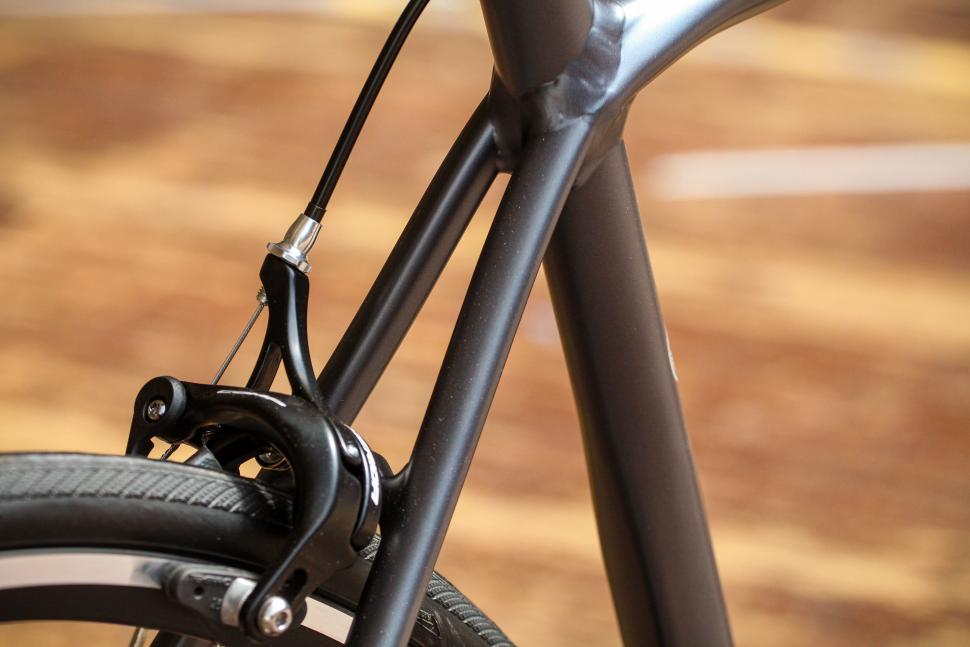


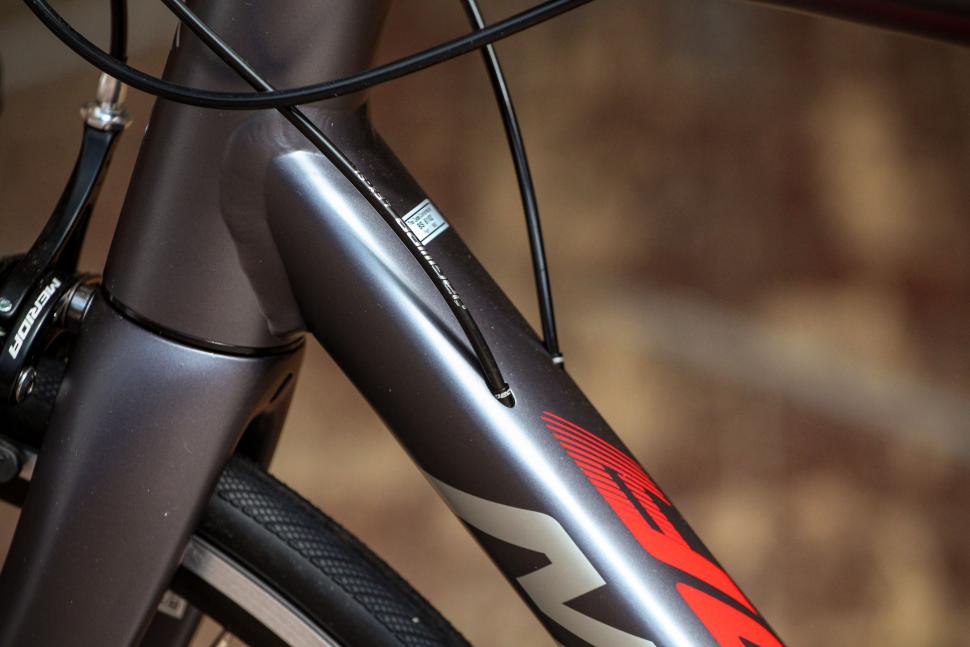
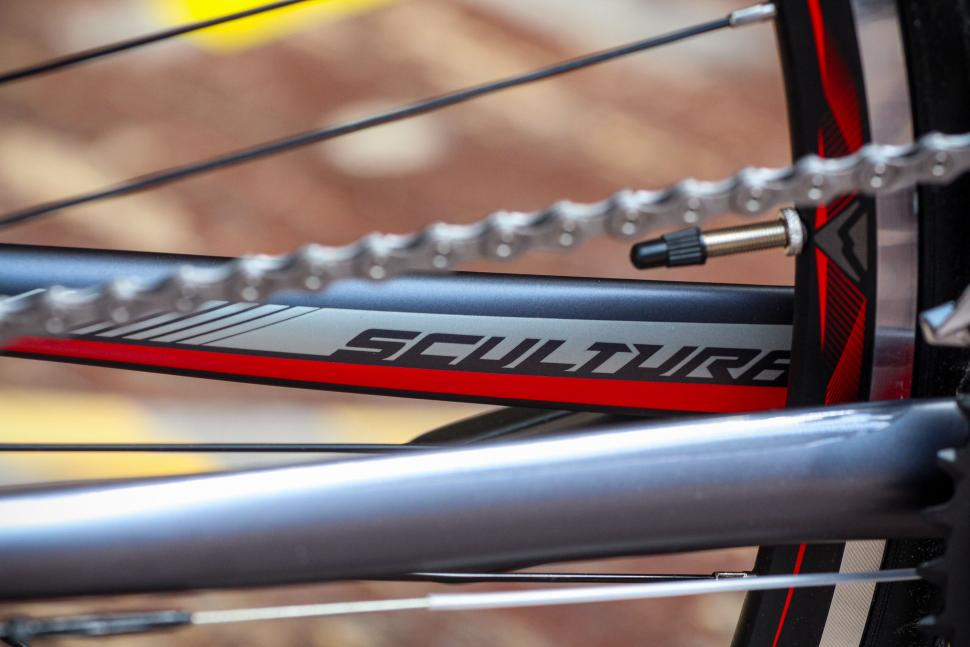


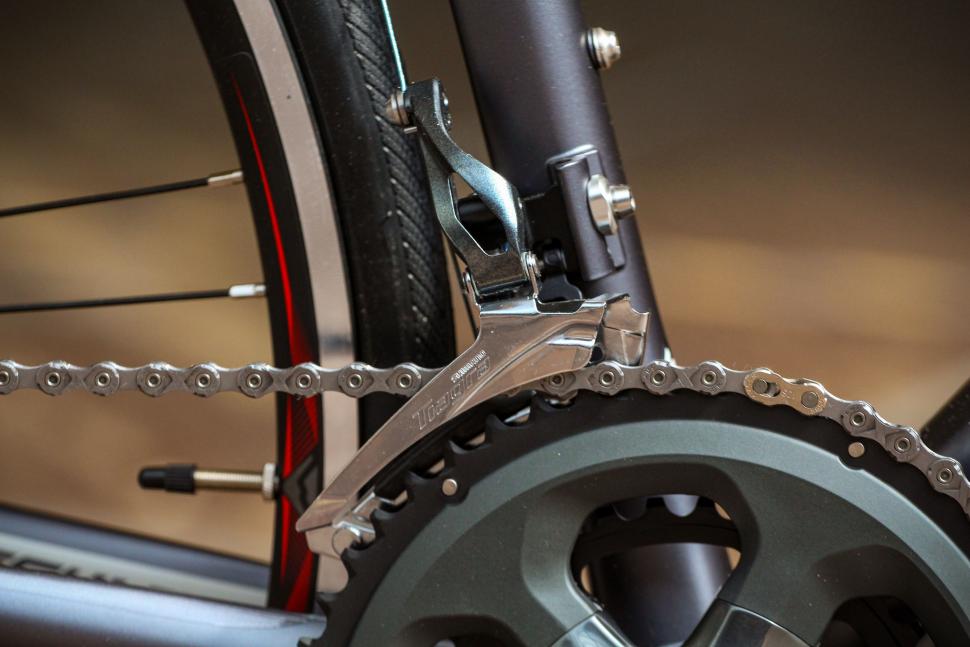
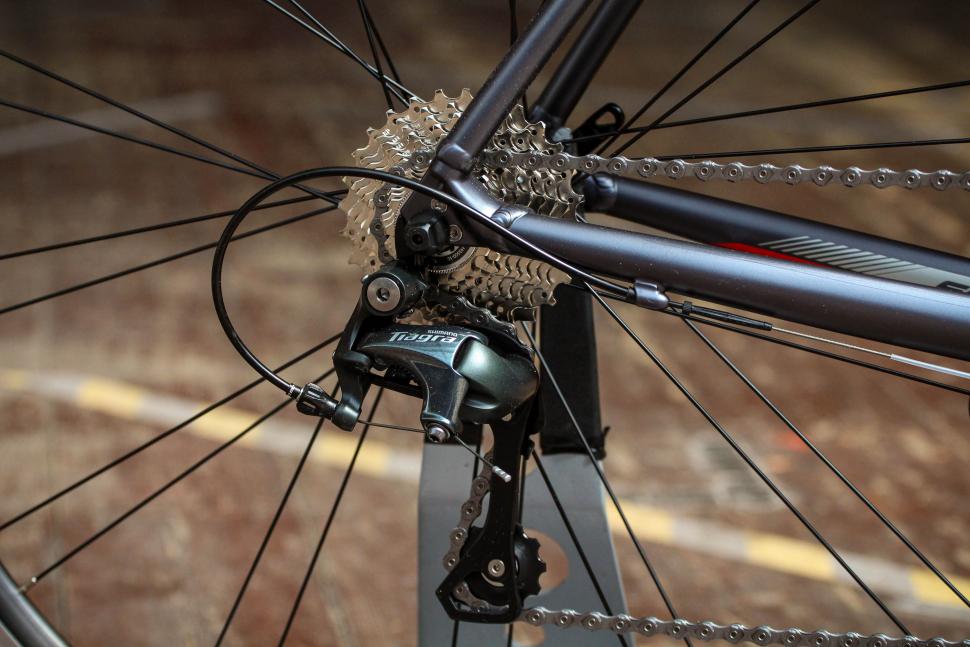


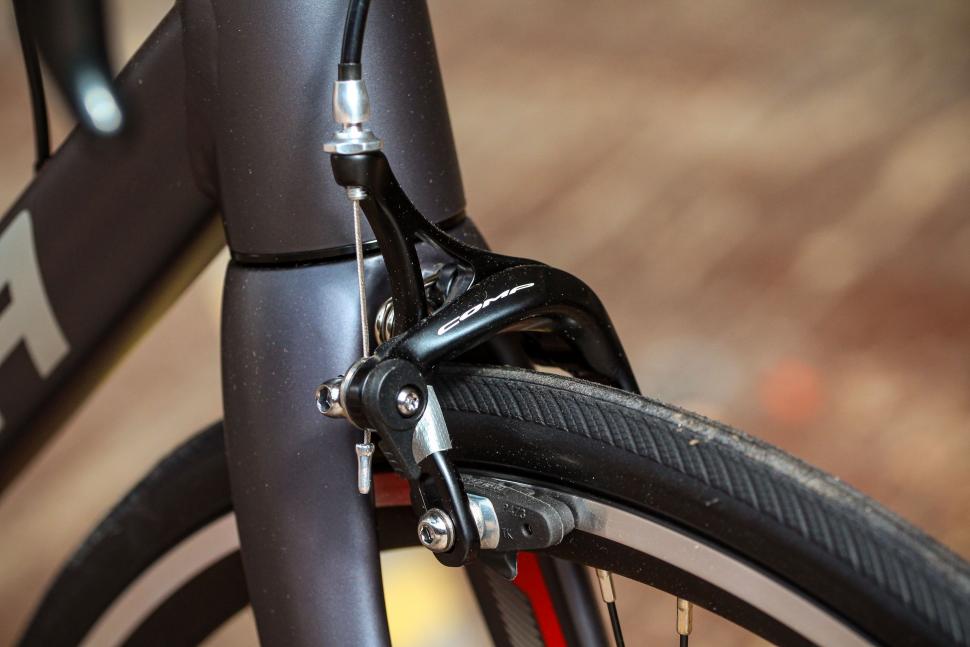
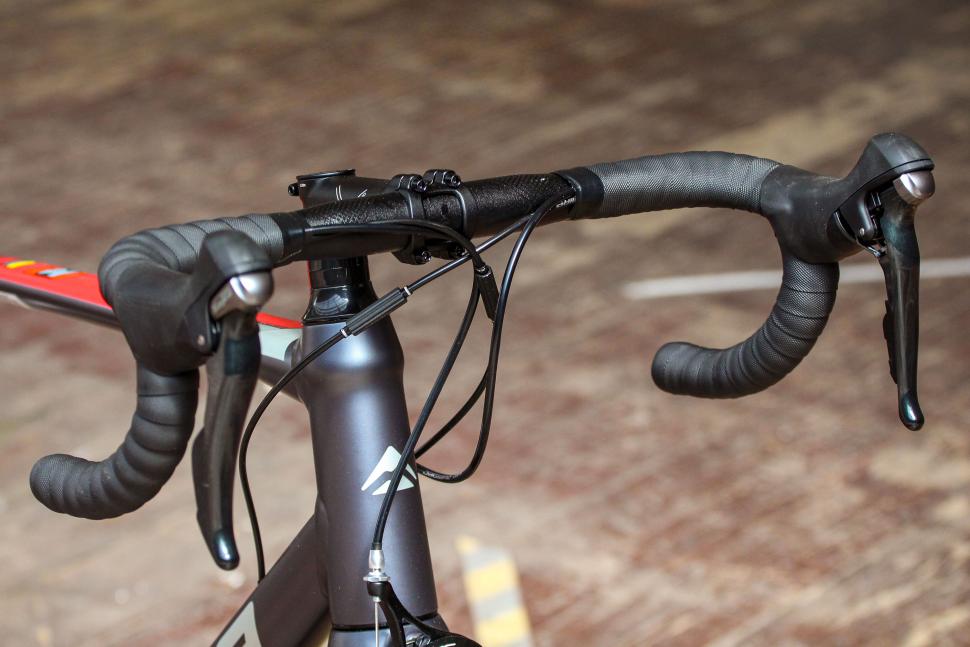
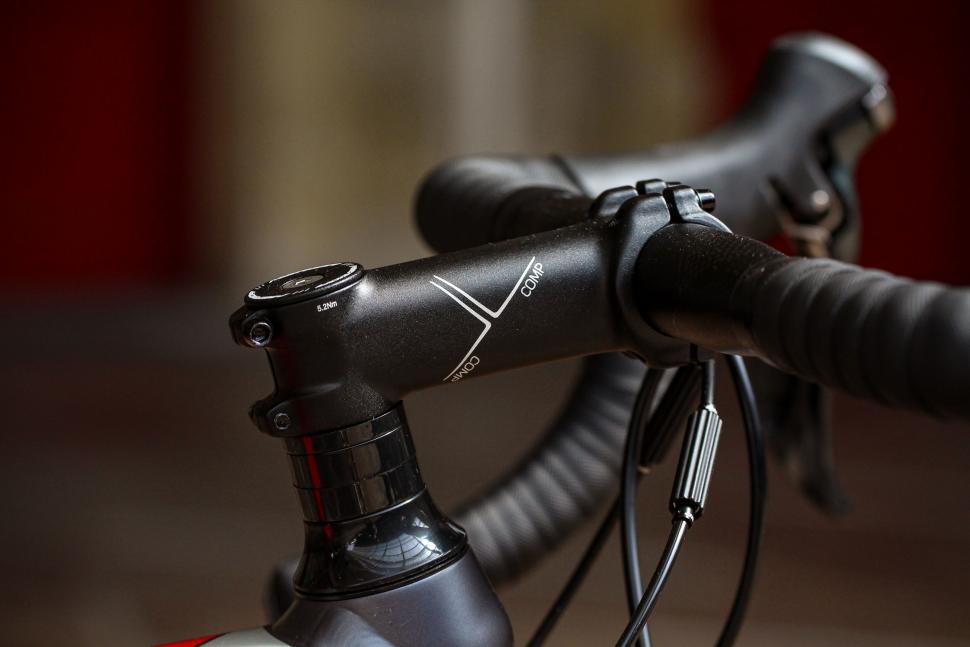
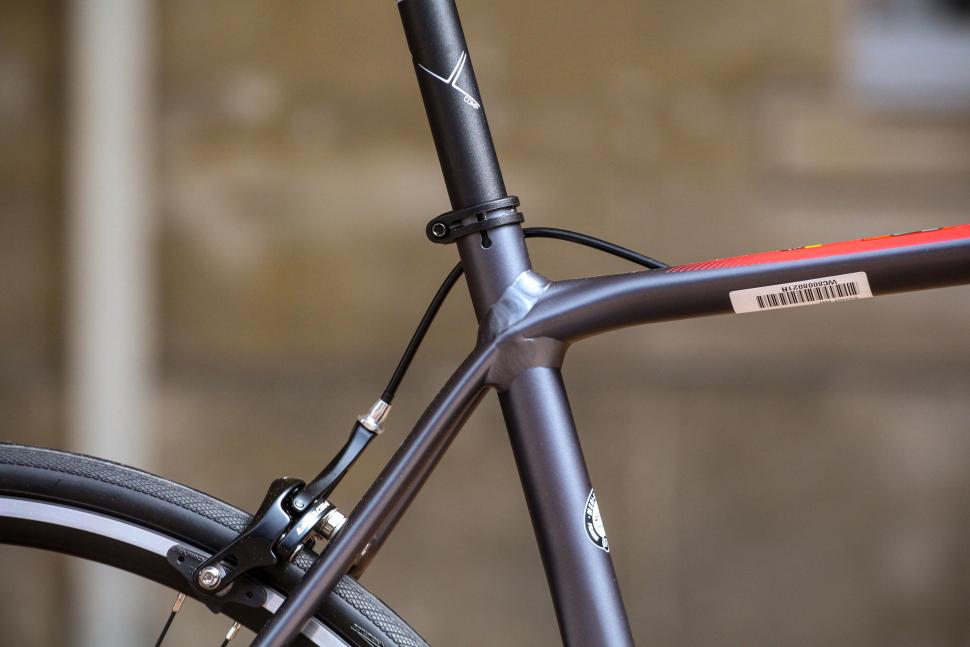

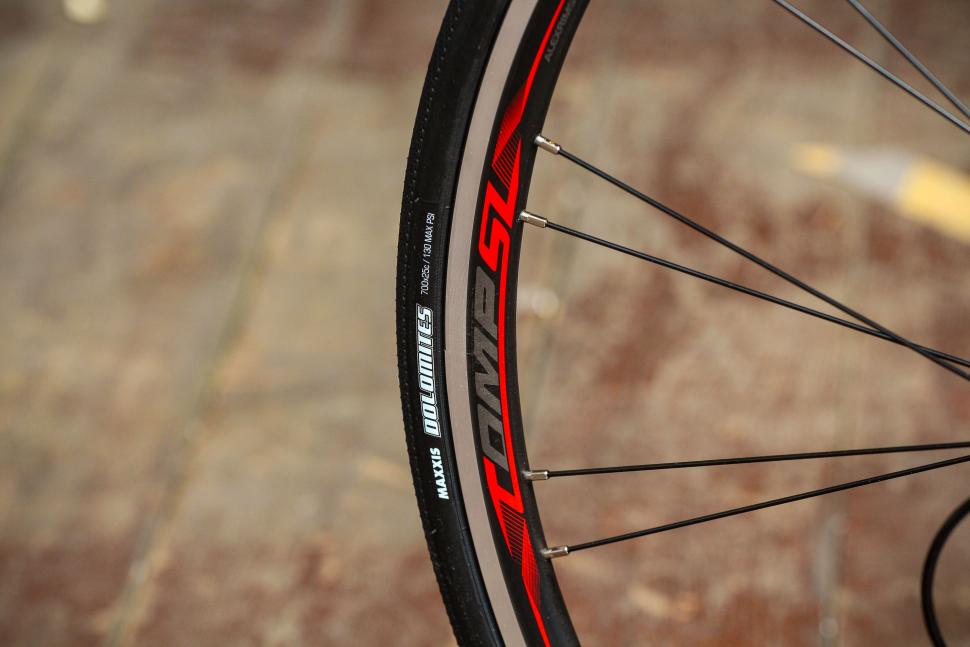
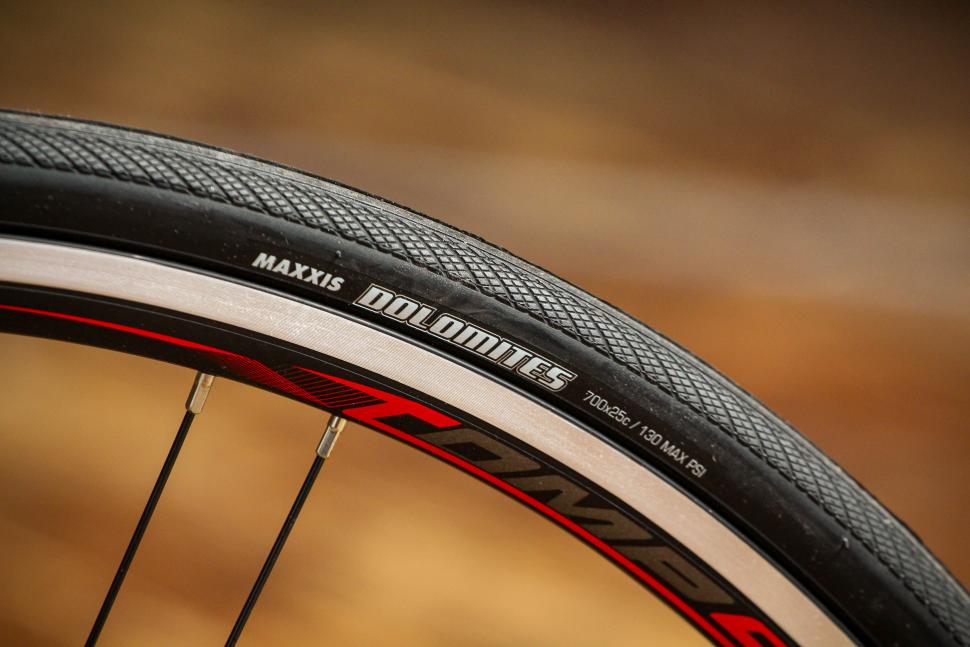



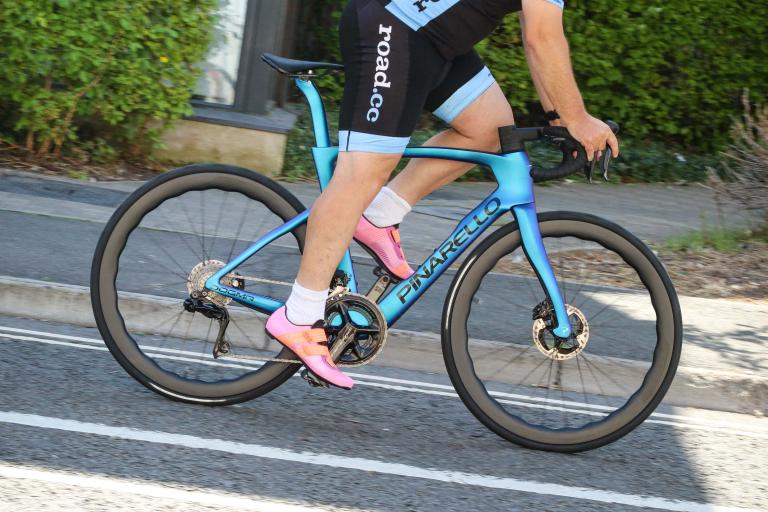
Add new comment
3 comments
The specialized allez with Sora is now £950, with 105 now £1200. Quite a price hike which makes this bike seem good value.
£50 more will get you a Dolan L'Etape. Carbon frame, full 105 or Centaur, best part of 2 kg lighter. Somewhat racier in intent but seems even better value.
And, I believe, Dolan are just launching a new iteration of the Etape frameset.